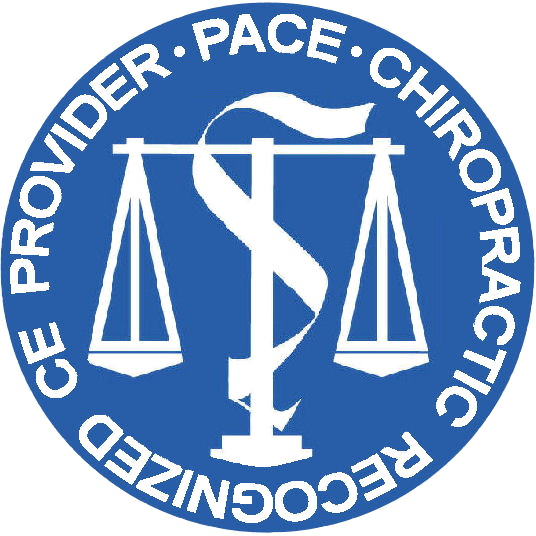CE Curriculum
Aligned Continuing Education A.C.E. Program
CE Course OutlineS

Course Objective:
To practice congruently, through growing our own health and wellbeing first before expecting our communities to continue to follow our leadership.
- To provide relevant, researched classes on health subjects that if applied in practice will transform the practice to be healthier from the inside out.
- To navigate the healthcare options for optimal outcomes.
- To teach the doctor the ability to critically evaluate research and apply its usefulness to patient outcomes.
- This course clarifies, articulates and substantiates how the inseparability of science and philosophy is not a chiropractic debate or consideration but an indisputable part of advancing healthcare and comprehension regardless of healthcare specialty, discipline or personal position on such issues.
Overview of Course:
- Present research done in the medical model that acknowledges the public demand for a non-pharmaceutical and non-surgical option for care and particularly the public's demands for chiropractic. To critically evaluate research and the perspectives from which it is performed, recorded, written and interpreted.
- Study and assess research for its merits and shortfalls in an unbiased round table facilitation thus forcing the participants to form their own positions on assessment and defense according to their perspectives.
- Facilitate the reading of research in group in order to attempt to assess the intentions (objectives) and impressions (findings) of the researcher, and the effects which the objectives of the researcher and team (potentially) has on the results achieved within the studies presented. We will train participants in how to determine if research is valid or flawed and whether it's basis for study are cause or effects centered (maintaining that both have merit).
- Position the usefulness of science to the practicing doctors, both in research and in practice as not merely a means for information but enhanced patient outcomes and engagement.
- Intensify our profession's support for more research in wellness care and vitalistic models not merely pain models. To facilitate the participants to propose paths of intended study and research based on information they determine as critically important to the benefit of the patients as well as the chiropractic profession as it labors to move forward and prove usefulness.
- Apply this information directly to patient benefits within "real-time" passages. To perform exercises in discussing and debating how knowledge, positioning of interpretation of research, use of research and propagation of new research can benefit a patient's recovery. To strengthen the participant's ability to debate, discuss and intelligently critique research for its authenticity, quality, application and usefulness.
CE Curriculum:
Course OutlineS
BEST PRACTICES OF CHIROPRACTIC CARE
Evidence-Based Outcomes
- The established, researched best practices of chiropractic care.
- Research validating how chiropractic care is successful at reducing pain, improving function, and enhancing mental health.
- Addressing patient expectations of care with certainty.
MOBILITY & MECHANICS
Biomechanics
- Practical tests to measure mobility, strength and flexibility in your patient exams.
- Mortality statistics that we as chiropractors can and should be reducing because of growing patients’ mobility.
- The differences in normal and abnormal movement defined by the physiology and function of joints.
X-RAY SAFETY
X-ray/MRI
- Knowledge of what the real risks and benefits of x-rays taken in chiropractic clinics are.
- Assessment of the value of x-rays as a diagnostic tool in the practice of chiropractic.
- Red flags visualized on x-rays that would have been missed without imaging and the potential harm caused by not taking the x-rays.
FIX ME - LIMITATIONS OF MATTER
Patient Communication
- Establishing realistic expectations of the care recommended, considering patient’s own comorbidities, history of traumas and complicating factors.
- Physical limitations of matter affecting the patient’s progress with care.
- Case studies of patients recommended care objectives and expectations considering their particular limitations of matter.
TRAUMA EVALUATIONS
Forensics/Causality
- Ways to uncover traumas people have encountered that are contributing to their current health status.
- Micro and macro traumas cumulative effects and impacts on healing.
- Connection of traumas to comorbidities and complicating factors affecting their health outcomes.
BONE HEALTH
Anatomy
- Understanding that bone is a living organism – how bones are nourished and degenerated.
- Explore the connection between compromised nerve flow and bone health.
- Stress on bones is inevitable whether or not it is a positive stress to grow the bones or negative stress triggering degeneration.
COMPARING COMORBIDITIES
Forensics & Causality
- Patient history storytelling explored to uncover comorbidities which complicate patient’s progress.
- Comorbidities impacting realistic expectations of care.
- Relevant case studies reviewing the trajectories of outcomes of care provided with varying amounts of comorbidities.
COMMUNITY WELLNESS
Mental Health, Principles of practice, patient communication
- Prevalence of mental health illnesses in our communities and how to bridge the benefits of chiropractic care to mental health.
- Relevance of social isolation, loneliness, and living alone on longevity.
- How to utilize community-based tools to demonstrate how chiropractic care enhances physical and mental health.
WORKPLACE WELLNESS
Principles of Practice
- Ergonomic audit of your workplace for detecting enhancements and risks to functionality and efficiency in your work environments.
- Discover the multitude of negative stresses on our bodies in our workstations.
- Create a plan to optimize your work environment for your physical longevity of the work demands.


